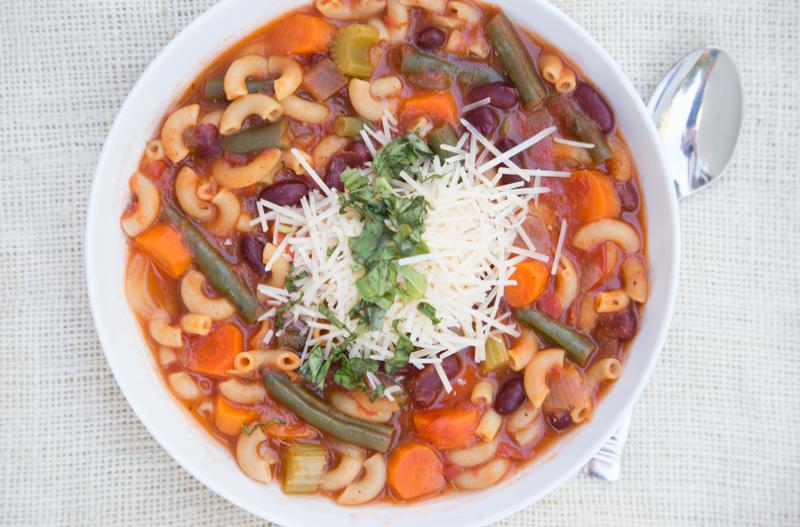Minestrone soup is a beloved Italian staple that has been enjoyed for generations. Known for its hearty, vegetable-packed broth and comforting flavors, this soup is more than just a meal—it’s a tradition. Whether you're looking to create a cozy dinner or want to make use of seasonal produce, minestrone offers endless possibilities. In this article, we’ll explore everything you need to know about making the perfect minestrone soup, from ingredients and variations to serving suggestions and storage tips.

What Makes Minestrone Soup Special?

At its core, minestrone is a vegetable-rich soup that typically includes tomatoes, beans, pasta, and a medley of fresh vegetables. It's a dish that celebrates simplicity and seasonality. The base of the soup is often made with onions, carrots, and celery—known as a soffritto in Italian—which are sautéed in olive oil to create a fragrant foundation. This is then combined with diced tomatoes, herbs like oregano and thyme, and a variety of vegetables such as green beans, zucchini, and potatoes. The addition of white or kidney beans adds protein and texture, while small pasta shapes like ditalini or elbow macaroni give the soup a satisfying chewiness.
Key Ingredients for Minestrone Soup

To make a delicious batch of minestrone, you'll need a few essential ingredients:
- Onion, carrot, and celery – These form the aromatic base of the soup.
- Garlic – Adds depth of flavor without overpowering the dish.
- Diced tomatoes – Provides a sweet and tangy base.
- Green beans – Adds color and a crisp texture.
- White or kidney beans – Offers a creamy, hearty texture.
- Vegetable broth – Can be store-bought or homemade.
- Bay leaves, oregano, and thyme – These dried herbs add complexity.
- Small pasta – Enhances the soup’s texture and thickness.
- Fresh parsley and Parmesan cheese – For garnish and extra flavor.
Variations and Customization
One of the best things about minestrone is its versatility. As Alice Waters wrote in The Art of Simple Food, this soup is endlessly customizable. Here are some ideas to experiment with:
- Substitute fennel for celery – Adds a unique, slightly licorice-like flavor.
- Replace green beans with zucchini or squash – Great for summer months.
- Use fresh Roma tomatoes instead of canned ones – For a fresher taste.
- Add fresh greens like spinach or kale – Near the end of cooking for a vibrant finish.
- Skip pasta and use grains like farro or barley – For a gluten-free alternative.
- Cook your own beans – Use the cooking liquid instead of broth for added flavor.
Tips for Perfect Minestrone

Creating the perfect minestrone involves a few key techniques:
- Sauté the soffritto first – This step ensures the vegetables release their natural sugars and aromas.
- Don’t overcook the garlic – Add it after the onions, carrots, and celery to avoid bitterness.
- Use high-quality ingredients – Fresh herbs and good-quality broth can make a big difference.
- Adjust the consistency – If the soup becomes too thick, add more broth or water to reach your desired texture.
- Let it rest – Minestrone often tastes better the next day as the flavors meld together.
Serving Suggestions
Minestrone is a complete meal on its own, but it pairs beautifully with crusty bread, garlic flatbread, or a simple side salad. Some popular options include:
- Crusty bread – Perfect for soaking up the rich broth.
- Parmesan Garlic Flatbread – A flavorful complement to the soup.
- Arugula salad – Adds a peppery contrast to the hearty soup.
- Beet salad – Offers a sweet and earthy balance.
- Pear salad – Brings a refreshing twist to the meal.
For a vegan version, skip the Parmesan or use a vegan pesto topping instead.
Storing and Freezing Minestrone
Proper storage is essential for keeping your minestrone at its best:
- Refrigerate – Store in an airtight container for up to a week. The soup actually improves in flavor over time.
- Freeze – While freezing is possible, it's not ideal due to the fresh vegetables. If you do freeze, consider removing the pasta before freezing and adding it later.
- Reheat – Simply warm the soup on the stove or in the microwave. If the soup has thickened, add a bit of broth or water to restore the desired consistency.
Final Thoughts
Minestrone soup is more than just a recipe—it's a celebration of fresh, seasonal ingredients and the joy of cooking. Whether you stick to the classic version or put your own spin on it, this soup is sure to bring comfort and satisfaction to your table. So grab your favorite veggies, get creative, and enjoy the warmth of a homemade bowl of minestrone.